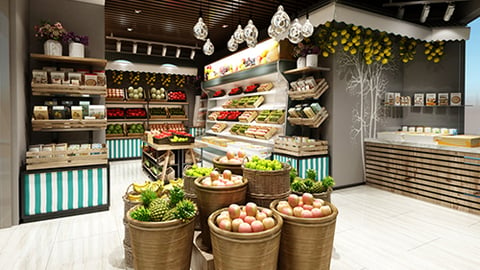Supermarket Satisfaction Depends on Age Demographic
According to “U.S. Food Shopper Research 2025: The Supermarket Experience,” the latest study from The Feedback Group, a provider of actionable consumer insights to the food retail industry, supermarkets continue to be popular with older demographics, but are less compelling to younger shoppers. The national study, based on 1,100 supermarket shopper interviews, offers a comprehensive view of evolving in-store consumer perceptions, behaviors and satisfaction drivers.
Asked about their most recent food shopping visit, Silent Generation and Boomer consumers chose supermarkets as their top destination. However, Gen Z, Millennials and Gen X prefer such other formats as Walmart, ALDI, dollar stores and club stores. Notably, supermarkets plummeted from the second-most shopped channel among Millennials and Gen X in 2024 to near the bottom this year.
“A generational reshuffling is underway, with younger shoppers gravitating more toward other food formats, leaving supermarkets to re-evaluate how they engage this critical audience to remain relevant,” observed Brian Numainville, principal at The Feedback Group, which is based in Lake Success, N.Y.
Supermarket satisfaction remained high overall (4.39 on a five-point scale), with older shoppers and younger shoppers reporting higher satisfaction than middle generations. Shoppers using cashier-assisted lanes report higher satisfaction (4.45) versus self-checkout users (4.29), underscoring the continued worth of human interaction.
[RELATED: FMI Highlights Key Trends Influencing Future of Food Shopping]
Food quality (4.48) and cleanliness (4.47) led supermarket performance ratings, while value for money (4.19) earned the lowest score. As to departments throughout the store, when expectations aren’t met, the causes are predominantly pricing, product availability and variety offered.
Shoppers who couldn’t find all of the items they wanted rated their satisfaction considerably lower (3.99) than those who were able to find everything (4.47). Sensory elements such as pleasant aromas, enjoyable music and food sampling correlate with increased spending, with shoppers who notice enticing food aromas spend 25% more, those who notice enjoyable music spend 35% more, and those who sample foods spend 67% more, The Feedback Group pointed out.
Digital circular use once more surpassed print, with 52% of shoppers now using a digital ad, up from 48% last year. In-store mobile use continued to be strong, with one-third of shoppers using phones for such tasks as finding specials and accessing loyalty programs.
In spite of robust social media use (88%), just 25% of shoppers are connected to their primary supermarket on any platform, which the research spotlighted as an area of opportunity, especially among younger consumers.
Only 45% of shoppers said that they believe their supermarket seeks feedback, while 59% believe their store values them personally as customers. In both of these areas, stores perceived as responsive had significantly higher net promoter scores. Additionally, when shoppers experience a positive interaction, their overall satisfaction is much higher and they spend more, The Feedback Group found.
“Our research makes it clear that sensory experiences, pleasant interactions, personalized recognition and perceived listening by supermarkets directly contribute to loyalty and higher spending,” noted Doug Madenberg, chief listening officer at The Feedback Group. “Retailers that close this gap will build stronger relationships and drive greater performance.”
Full findings of the report are available to retailers, wholesalers and food industry stakeholders. Last month, The Feedback Group issued a study exploring shopper perceptions surrounding prices, inflation and tariffs, and how these concerns are influencing consumer behavior in supermarkets.






